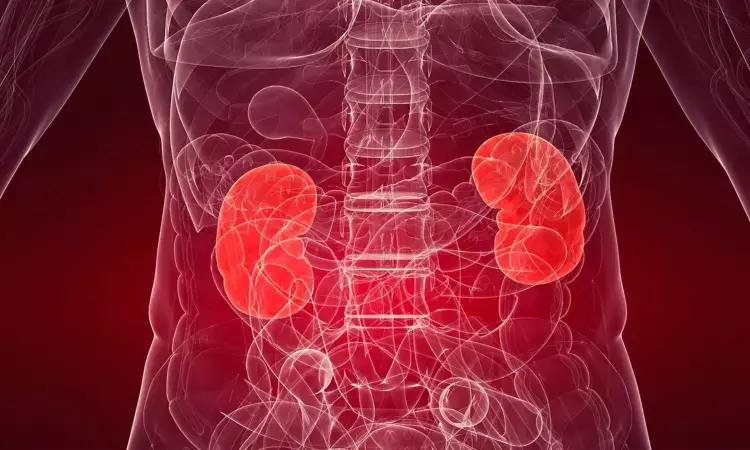- Home
- Medical news & Guidelines
- Anesthesiology
- Cardiology and CTVS
- Critical Care
- Dentistry
- Dermatology
- Diabetes and Endocrinology
- ENT
- Gastroenterology
- Medicine
- Nephrology
- Neurology
- Obstretics-Gynaecology
- Oncology
- Ophthalmology
- Orthopaedics
- Pediatrics-Neonatology
- Psychiatry
- Pulmonology
- Radiology
- Surgery
- Urology
- Laboratory Medicine
- Diet
- Nursing
- Paramedical
- Physiotherapy
- Health news
- Fact Check
- Bone Health Fact Check
- Brain Health Fact Check
- Cancer Related Fact Check
- Child Care Fact Check
- Dental and oral health fact check
- Diabetes and metabolic health fact check
- Diet and Nutrition Fact Check
- Eye and ENT Care Fact Check
- Fitness fact check
- Gut health fact check
- Heart health fact check
- Kidney health fact check
- Medical education fact check
- Men's health fact check
- Respiratory fact check
- Skin and hair care fact check
- Vaccine and Immunization fact check
- Women's health fact check
- AYUSH
- State News
- Andaman and Nicobar Islands
- Andhra Pradesh
- Arunachal Pradesh
- Assam
- Bihar
- Chandigarh
- Chattisgarh
- Dadra and Nagar Haveli
- Daman and Diu
- Delhi
- Goa
- Gujarat
- Haryana
- Himachal Pradesh
- Jammu & Kashmir
- Jharkhand
- Karnataka
- Kerala
- Ladakh
- Lakshadweep
- Madhya Pradesh
- Maharashtra
- Manipur
- Meghalaya
- Mizoram
- Nagaland
- Odisha
- Puducherry
- Punjab
- Rajasthan
- Sikkim
- Tamil Nadu
- Telangana
- Tripura
- Uttar Pradesh
- Uttrakhand
- West Bengal
- Medical Education
- Industry
Study Identifies D-Dimer Dynamics as Independent Predictor of AKI Patient Survival

China: A recent study published in Frontiers in Medicine by Dr. Lixiang Rao and colleagues from the Division of Nephrology at Liyuan Hospital, Tongji Medical College, Huazhong University of Science and Technology, Wuhan, China, sheds new light on the prognostic value of D-dimer dynamics in patients with acute kidney injury (AKI). The research highlights the significance of tracking D-dimer levels over time to assess mortality risk during hospitalization.
The retrospective study evaluated medical records of AKI patients admitted to Tongji Hospital between July 2012 and April 2024. Eligible participants included those who had undergone at least three D-dimer tests within 30 days following the onset of AKI. The aim was to identify distinct patterns in D-dimer trajectories and explore their link with in-hospital mortality.
To achieve this, the researchers employed latent class trajectory models (LCTMs), which enabled the classification of patients into subgroups based on the evolution of their D-dimer levels. After analyzing multiple models using statistical indices such as the Akaike Information Criterion and Bayesian Information Criterion, a two-class model emerged as the best fit.
The study led to the following findings:
- The study identified two D-dimer trajectory patterns: an early spike followed by a gradual decline and a consistently low level.
- Patients were categorized into the "high-peak decline group" and the "sustained low-level group."
- Those in the high-peak decline group had a significantly higher risk of in-hospital mortality.
- Logistic regression revealed over twice the odds of in-hospital death in the high-peak group compared to the low-level group (OR 2.27).
- Kaplan-Meier survival curves showed reduced survival rates in the high-peak decline group.
- Subgroup analyses confirmed the higher mortality risk in the high-peak group across age, gender, chronic kidney disease, cancer, surgery, myocardial infarction, and cerebral infarction.
- No significant interactions were found in subgroup analyses, indicating that the mortality risk linked to D-dimer trajectories was independent of other clinical variables.
Despite valuable findings, the study's limitations include its single-center, retrospective design, which limits generalizability. Missing inflammatory markers and severity scores restrict the assessment of systemic inflammation. AKI diagnosis relied only on serum creatinine, possibly underestimating mild cases. Additionally, the absence of post-discharge follow-up hinders the evaluation of long-term patient outcomes.
There was no clear link between D-dimer trajectories and pulmonary embolism, possibly due to the small number of such cases in the dataset.
The authors recommend that future research adopt multicenter, prospective designs with comprehensive data collection, including inflammatory and coagulation markers, to enhance clinical relevance.
The authors concluded, "The study highlights that monitoring the dynamic changes in D-dimer levels can serve as a valuable tool for predicting in-hospital mortality among AKI patients. Given its accessibility and cost-effectiveness, D-dimer may support timely prognosis evaluation and personalized treatment strategies in clinical practice."
Reference:
Rao, L., Sun, J., Zhao, X., Ge, S., & Li, N. (2025). Association between D-dimer and in-hospital mortality risk in Acute Kidney Injury based on latent class dynamic trajectory. Frontiers in Medicine, 12, 1554213. https://doi.org/10.3389/fmed.2025.1554213
Dr Kamal Kant Kohli-MBBS, DTCD- a chest specialist with more than 30 years of practice and a flair for writing clinical articles, Dr Kamal Kant Kohli joined Medical Dialogues as a Chief Editor of Medical News. Besides writing articles, as an editor, he proofreads and verifies all the medical content published on Medical Dialogues including those coming from journals, studies,medical conferences,guidelines etc. Email: drkohli@medicaldialogues.in. Contact no. 011-43720751


